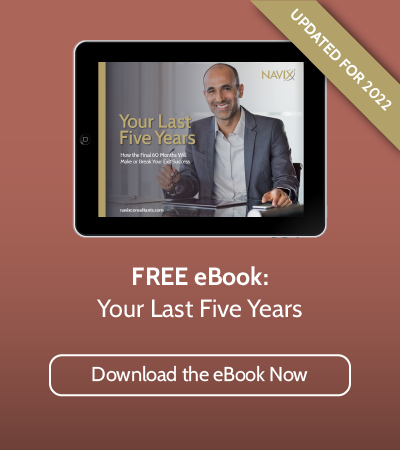By: Patrick Ungashick
%20(1).jpg?width=1000&name=GettyImages-1004613044%20(2)%20(1).jpg)
Every time a business generates an extra dollar of profit, the business’s owner has a choice to make — do you leave that money in the business to reinvest, or receive it personally and take it home?
We call this the reinvest-receive ratio. The entrepreneurial habit is to leave most money in the business. Reinvesting in the business can make a lot of sense. In the beginning, when a business may be small and fragile, reinvesting might be required just to survive.
Once the business is established and expanding, reinvesting back into the business often seems like a no-brainer decision — the company is your investment with the greatest potential for growth. As a result, business owners tend to reinvest most of their dollars over time, to the point where they end up with the vast majority of their personal net worth sitting inside their companies by the time they reach exit.
7 Advantages of Taking Surplus Dollars Out
However, as exit draws near, reinvesting heavily or even exclusively back into the business can cause problems. In our experience, there are seven important advantages owners gain by taking surplus dollars out of the company prior to exit.
- Receiving dollars reduces risk. We are all familiar with the dangers of putting all your eggs into one basket. Business owners are not exempt from this risk. Warren Buffett, someone well-versed in creating wealth through business, once observed, “You can get rich by only investing in one stock, but you can’t stay rich that way.” In addition, cash left in the business is also exposed to potential business creditors.
- Taking dollars home can, in some situations, reduce current income taxes. There are several ways owners can receive money from the business along the way and in the process reduce current income taxes. For example, retirement plans and captive insurance companies are two strategies that potentially can create tax-favorable wealth accumulation for the owner outside the company.
- Taking money out of the company increases exit options. Owners who have predominantly reinvested back into the business typically need cash at exit because they have little to none outside the company. The serious need for cash can eliminate exit options, such as giving the business to the kids. Selling the business to an inside buyer (one or more employees) also may be prohibitively difficult. Receiving money from the business prior to exit increases the owner’s exit options.
- Withdrawing surplus money increases control over the exit timing. Owners who have 50%, 75%, 90%, or more of their net worth tied up in their business sooner or later feel stress and pressure to fully or partially cash out. Receiving money from the business along the way reduces dependency and stress while increasing control over choosing when to exit.
- Next, receiving dollars personally helps increase your control over your future exit terms. When selling a business, owners who need a large portion of cash at closing may be unable to consider deal terms such as installment sales, stock swaps, and other terms that feature less cash at closing but offer potential advantages such as potential tax savings. Receiving money from the business along the way maximizes flexibility at exit.
- Last, taking surplus dollars out of the company can reduce co-owner conflict. When a business has two or more owners, it is nearly inevitable that the owners will have some incompatible exit goals, no matter how well they get along. One owner may want to exit sooner than another. Or, one owner may want to sell, while another owner wants his or her kids to get the business. When business co-owners have reinvested heavily back into the business, any competing exit goals will directly undermine one another’s success. Receiving money from the business along the way reduces potential co-owner conflict and goal misalignment.
- Taking surplus cash out of the company helps reduce the risk that you and your company’s buyer (if you intend to sell the business) disagree about how much cash is needed to run the company. This issue, often called the working capital adjustment, can be a serious problem at sale if your buyer wants you to leave more money in the company, thereby reducing your take-home proceeds at sale.
When to Design a Formal Exit Plan
If your desired exit is five years or sooner, it is time to design and follow a formal exit plan. Owners and their advisors need sound financial systems and forecasts to help them determine how much cash really is needed to fuel the business’s growth needs.
Any cash not needed for the foreseeable future should be received by the owners to diversify their net worth and avoid the pitfalls that can otherwise happen at exit. Remember, if later you realize you took too much cash out, you can always put it back in, but the reverse is not true.









